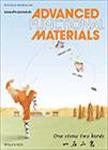版权所有:内蒙古大学图书馆 技术提供:维普资讯• 智图
内蒙古自治区呼和浩特市赛罕区大学西街235号 邮编: 010021

作者机构:State Key Laboratory of Material Processing and Die & Mold Technology School of Materials Science and Engineering Huazhong University of Science and Technology Wuhan 430074 China College of Materials Science and Engineering Beijing University of Chemical Technology Beijing 100029 China
出 版 物:《Advanced Functional Materials》 (实用新材料)
年 卷 期:2021年第31卷第2期
页 面:2170012-2170012页
学科分类:0809[工学-电子科学与技术(可授工学、理学学位)] 08[工学]
主 题:bismuth telluride lithium–sulfur batteries point defects separator modification ultrathin interlayers
摘 要:In article number 2001201, Zhen Li, Yunhui Huang, and co‐workers present an ultrathin, lightweight, and highly conductive Bi2Te2.7Se0.3 interlayer on the separator surface that can not only enhance the capacity utilization of the sulfur electrode, but also improve the cycling stability due to the strong interaction between polysulfides and the intrinsic antisite defects. This work proposes a defect engineering strategy accompanied with a facile method for developing more practical Li‐S batteries.